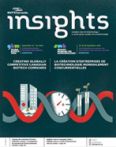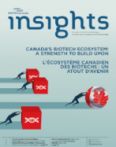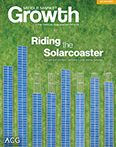505(b)(2) Regulatory Submissions Require Flexibility, Creativity and Resilience
The FDA Guidance describing the pathway for development and approval of a 505(b)(2) application covers a lot of ground, but as with any Guidance, it serves only as a general outline.
A key element of this Guidance is described in Section II.B.2.
“For changes to a previously approved drug product, an application may rely on the Agency’s finding of safety and effectiveness of the previously approved product, coupled with the information needed to support the change from the approved product.
The additional information could be new studies conducted by the applicant or published data. This use of section 505(b)(2), described in the regulations at 21 CFR 314.54, was intended to encourage innovation without creating duplicate work and reflects the same principle as the 505(j) application: it is wasteful and unnecessary to carry out studies to demonstrate what is already known about a drug.”
In my experience the phrase “coupled with the information needed to support the change from the approved product.” is not always straightforward or predictable. The negotiation with FDA involves the product profile desired by the Sponsor and the historical approval and market information within the Agency.
Perhaps the best way to examine some potential challenges and diversity of requirements is to present a few real life situations.
I discovered these challenges when I joined a virtual company, replacing the Head the Research and Development, Quality and Regulatory groups, where my predecessor, a tenured generic manager, approached the regulatory requirements for a 505(b)(2) NDA from a generic application viewpoint.
One NDA had already been submitted for an injectable product but was given the “Refuse to File” designation by FDA. The main issues centered on inappropriate site-specific stability and issues with stability indicating methods.
The application in question was for a hematology drug responsible for controlling blood clotting. Instead of a traditional clinical trial, extensive laboratory testing of blood taken from human subjects was required to compare the performance of the approved and the new product.
A new team, familiar with NDA requirements, had a very fruitful face-to-face discussion with FDA to restructure the project.
After returning from the FDA meeting, the quality assurance audit of the blood sampling and clinical laboratory I requested, turned up a number of record keeping and data tracking issues because the human blood sampling and testing (at a well-known university lab) did not follow cGLP or cGCP procedures.
The previous generic-minded staff viewed this work as a clinical laboratory testing protocol, not as a substitute for a pivotal clinical trial, so the traditional cGCP controls for acquisition of human blood and cGLP SOP’s for testing were not in place. Since the amount of work required to bring the site up to standards would be substantial, I decided to recast the work as a pilot study and completed a report.
Since this work would be considered as a substitute for a pivotal trial, we searched for another site that could do the work in compliance with cGLP/cGCP procedures. We discovered that there was no contract lab in the US or Europe that met all the standards, since their work primarily supported clinical testing for hospitals.
So, we partnered with a new US laboratory, wrote SOPs, trained their staff and maintained a resident lab supervisor for our study. After months or work, the data met all the standards, the site was inspection-ready and statistical analysis of the data demonstrated that our product was equivalent to the innovator product.
The test methods for stability were reworked and we were allowed to bridge the new stability data with the data generated with the previous methods for the batches manufactured in the intended commercial facility.
We were also fortunate to have helpful communications with FDA and the new submission received approval within the new PDUFA target date.
Another product reformulation was for an anesthesia recovery drug that had been approved many years before with only physician summary reports and some animal safety data. Although the drug had been in use almost 30 years, the new FDA requirement (based on the FDA Guidance called The Animal Rule) was a randomized, placebo controlled, comparator “clinical trial” in swine that were sensitive to a particular syndrome that could be triggered during surgery.
This study required not only following cGCP requirements, but finding a CRO with a surgical suite equipped to handle swine. In addition, we needed to find a reliable source of the swine with the genetic defect that caused the syndrome, since this is a somewhat rare trait and swine farmers try to avoid having animals with this liability. This proved to be extremely difficult. Eventually, we signed a supply agreement with a farmer and found a CRO in the Midwest with the appropriate facilities, although some additional equipment was purchased for our study.
We also had to negotiate with FDA regarding the number of animals since supply was limited. After conducting a pilot study, the trial in swine was successfully completed and an NDA submitted.
The valuable lesson with these projects is that some 505(b)(2) projects may be straightforward in some cases or very challenging and time consuming and may require some creative and flexible approaches.
The ability to partner and communicate with FDA, key contractors, Management and investors is an important element for these projects.



